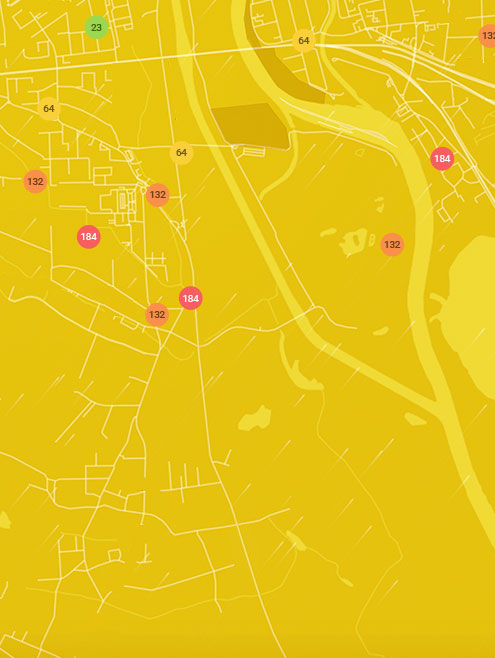Get a monitor and contributor to air quality data in your city.
362 people follow this station






AIR QUALITY DATA CONTRIBUTORS
Find out more about contributors and data sources| Weather | Broken clouds |
| Temperature | 37.4°F |
| Humidity | 83% |
| Wind | 5.2 mp/h |
| Pressure | 30 Hg |
| # | city | US AQI |
|---|---|---|
| 1 | Ostrava, Moravskoslezsky | 76 |
| 2 | Brno, South Moravian | 55 |
| 3 | Pilsen, Plzensky | 48 |
| 4 | Trinec, Moravskoslezsky | 47 |
| 5 | Prague, Praha | 33 |
| 6 | Hradec Kralove, Kralovehradecky | 31 |
| 7 | Usti nad Labem, Ustecky | 27 |
(local time)
SEE WORLD AQI RANKING
| # | station | US AQI |
|---|---|---|
| 1 | Frydek-Mistek | 42 |
(local time)
SEE WORLD AQI RANKINGUS AQI
42
live AQI index
Good
| Air pollution level | Air quality index | Main pollutant |
|---|---|---|
| Good | 42 US AQI | PM2.5 |
| Pollutants | Concentration | |
|---|---|---|
| PM2.5 | 10.1µg/m³ | |
| PM10 | 19.8µg/m³ | |
| NO2 | 5.9µg/m³ | |
| Enjoy outdoor activities | |
| Open your windows to bring clean, fresh air indoors GET A MONITOR |
| Day | Pollution level | Weather | Temperature | Wind |
|---|---|---|---|---|
| Wednesday, Apr 24 | Moderate 72 AQI US | |||
| Thursday, Apr 25 | Good 43 AQI US | |||
| Friday, Apr 26 | Good 35 AQI US | |||
| Today | Good 42 AQI US | 60.8° 37.4° | ||
| Sunday, Apr 28 | Good 44 AQI US | 68° 44.6° | ||
| Monday, Apr 29 | Good 41 AQI US | 73.4° 50° | ||
| Tuesday, Apr 30 | Good 41 AQI US | 73.4° 51.8° | ||
| Wednesday, May 1 | Moderate 55 AQI US | 66.2° 53.6° | ||
| Thursday, May 2 | Moderate 56 AQI US | 68° 51.8° | ||
| Friday, May 3 | Moderate 56 AQI US | 64.4° 51.8° |
Interested in hourly forecast? Get the app
Contributor
Government Contributor
1 station